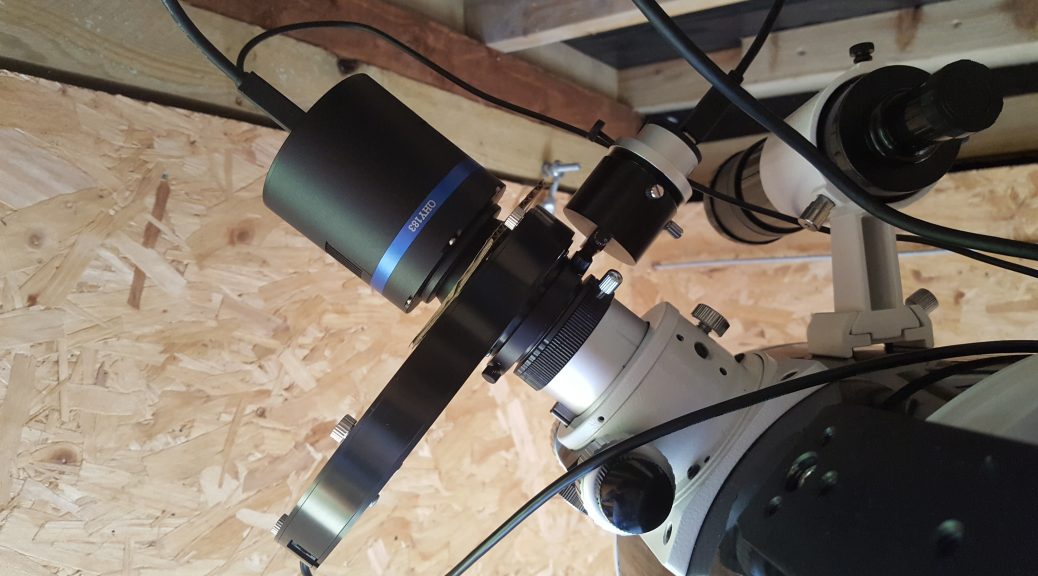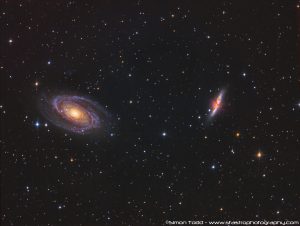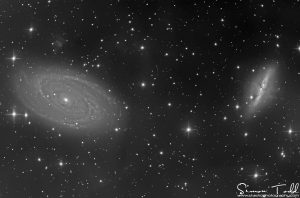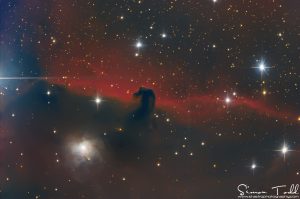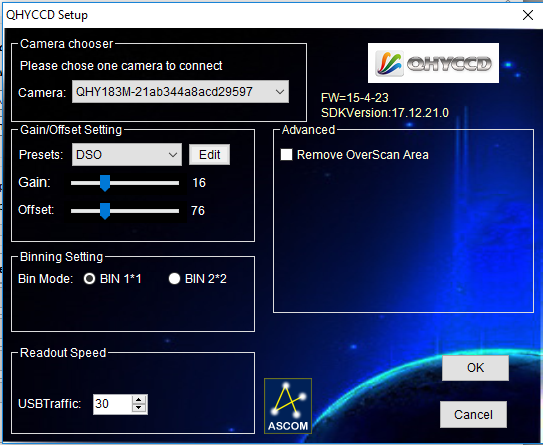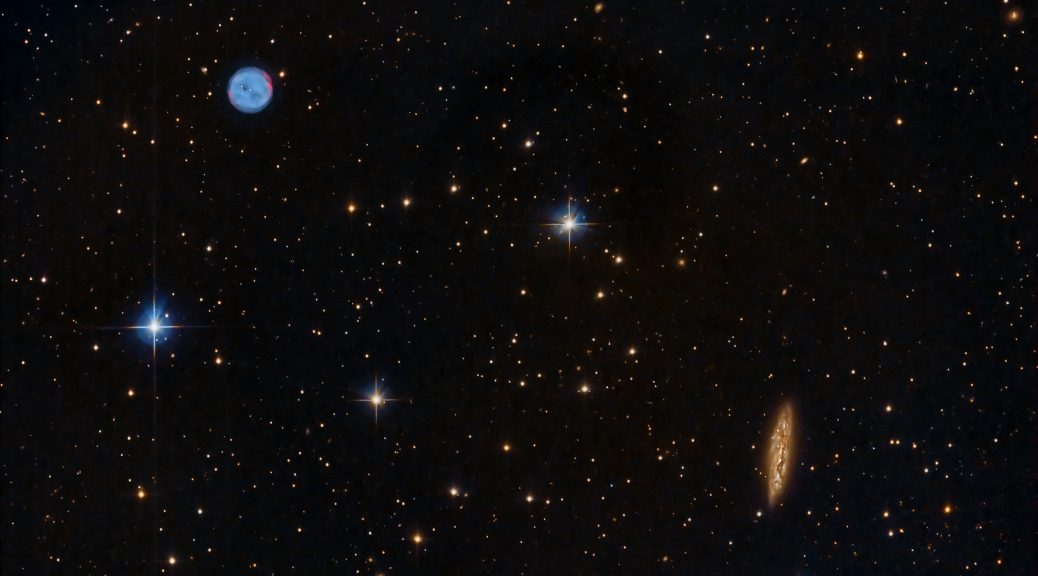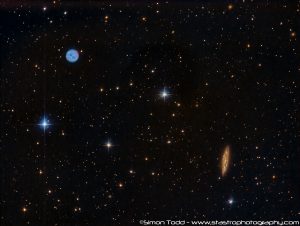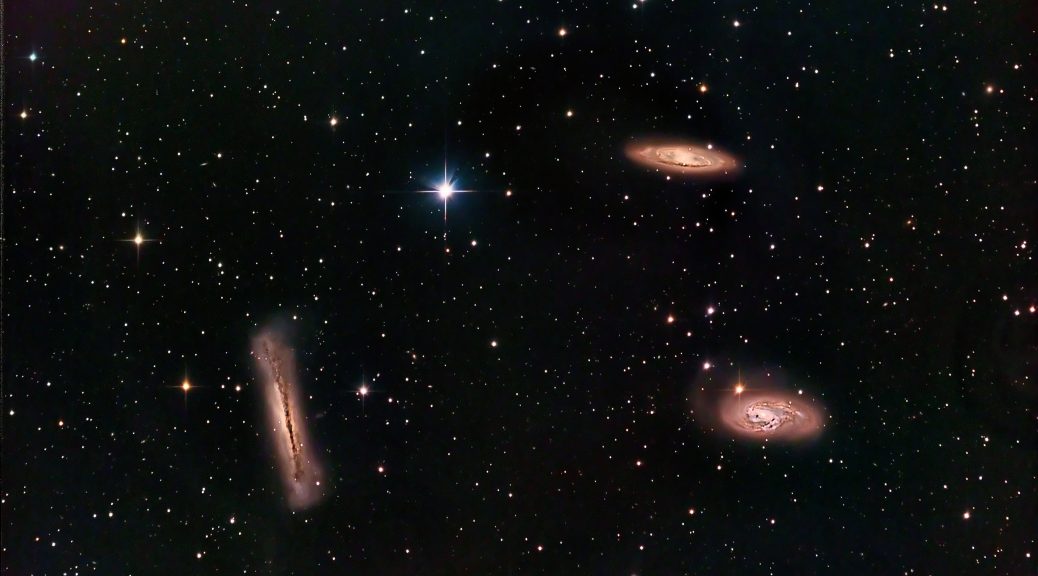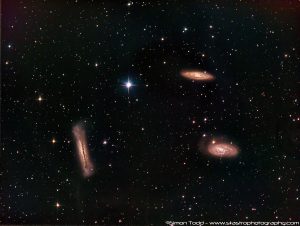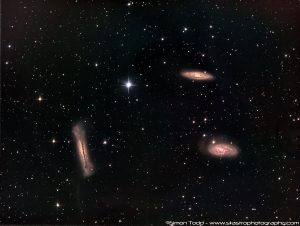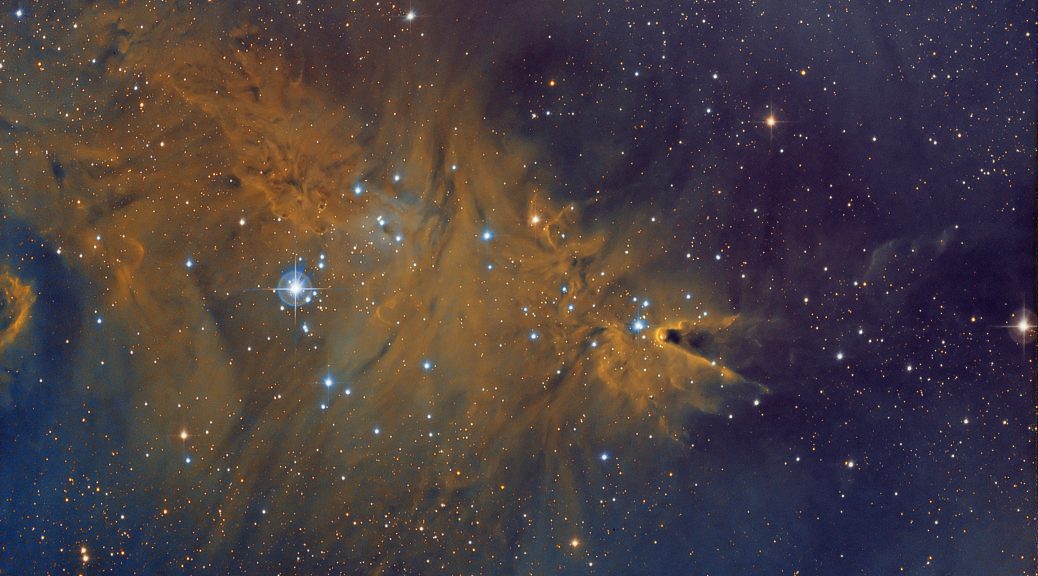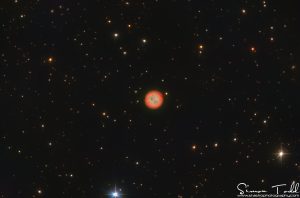 I have imaged this before in the same frame as the Surfboard Galaxy, however the 0.62 Arcseconds Per Pixel the Qhyccd 183M gives me on my Sky-Watcher Quattro 8″ F4 gives me a much higher resolution image, so here it is, the Owl Nebula in the constellation of Ursa Major at a distance of 2030 Light years from Earth
I have imaged this before in the same frame as the Surfboard Galaxy, however the 0.62 Arcseconds Per Pixel the Qhyccd 183M gives me on my Sky-Watcher Quattro 8″ F4 gives me a much higher resolution image, so here it is, the Owl Nebula in the constellation of Ursa Major at a distance of 2030 Light years from Earth
Gear:
Imaging Scope: Sky-Watcher Quattro 8″ F4 Imaging Newtonian
Imaging Camera: Qhyccd 183M 20mpx ColdMOS Camera at -20C and DSO Gain
Mount: Sky-Watcher EQ8 Pro
Guide Camera: Qhyccd QHY5L-II Mono
Guide Scope: Sky-Watcher 50×90 Finder Scope
Filter Wheel: Starlight Xpress Ltd 7x36mm EFW
Filters: Baader Planetarium 36mm RGB
Coma Corrector: Sky-Watcher Aplanatic Coma Corrector
Image Acquisition: Main Sequence Software SGPro
Image Processing: PixInsight
Image Details:
Target: M97/NGC3587 – Owl Nebula
Constelation: Ursa Major
Red: 27x300S
Green: 27x300S
Blue: 27x300S
Ha: 25x600S
Darks: 51x300S
Flats: 101
Bias: 251 converted to SuperBIAS and deducted from Flats
Imaging Dates: Feb. 12, 2018, Feb. 16, 2018, Feb. 24, 2018, Feb. 25, 2018
PixInsight Image processing workflow:
1. Calibrated against darks and Bias Subtracted Flats
2. Star Alignment for all RGB and Ha Frames
3. Least noise frame from each colour chosen as Normalization Frame and Dynamic Background Extraction Performed
4. Normalization of all frames
5. Stacking of frames and generation of drizle data (for larger quality image in future)
6. Performed LinearFit using Red stacked image as reference for RGB Frames
7. Performed DynamicCrop on all channels and Ha
8. Performed MultiMedianTransformation to reduce background noise
9. Performed SCNR to remove excessive green in image
10. Stretched the image using HistogramTransformation
11. Performed an Unsharp Mask on RGB and HA Data
12. Performed an ATWT on the Background
11. Merged the Ha Data using the HaRVB-AIP Script in PixInsight
12. Performed a CurvesTransformation to bring out the star colour

